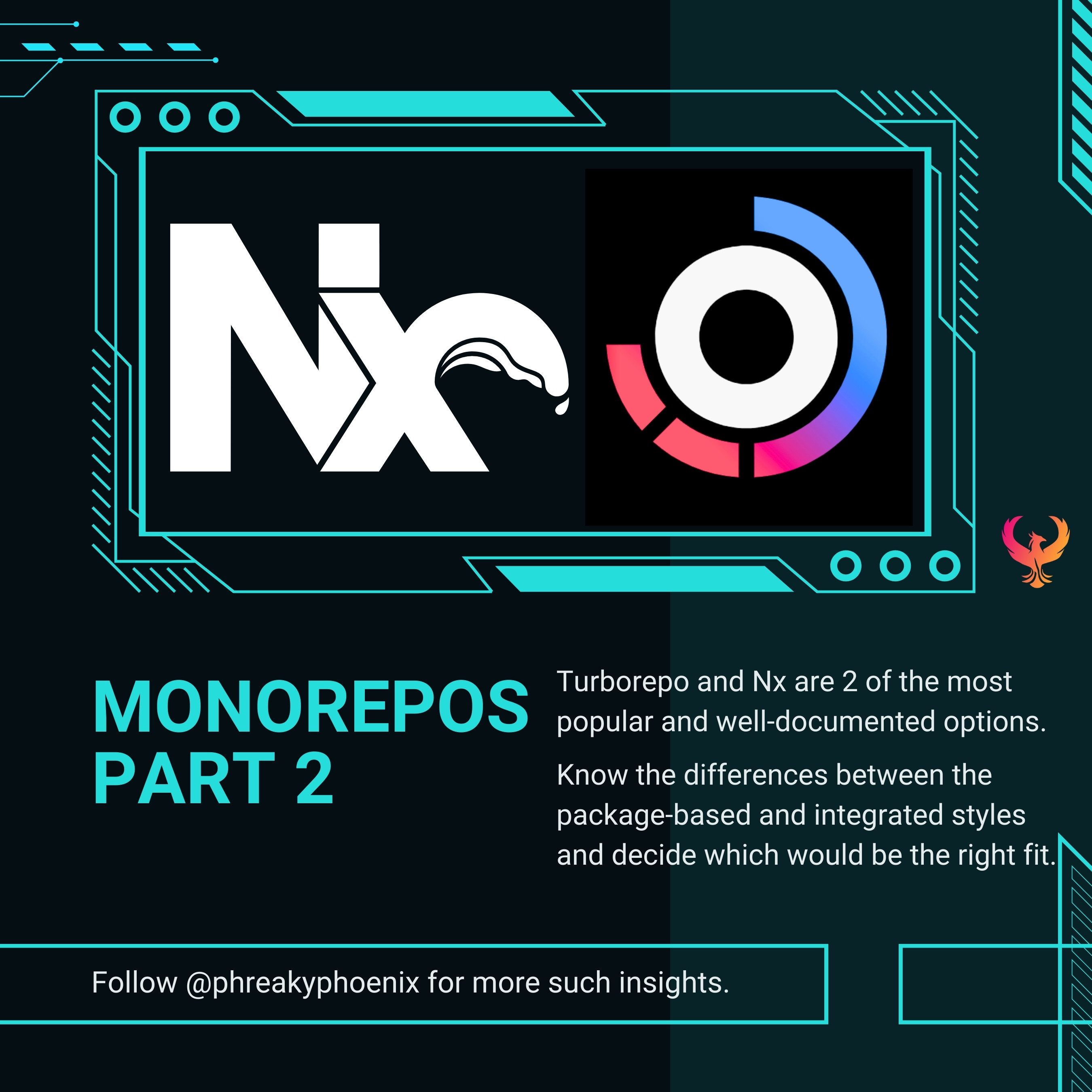Mastering Monorepos Part 2: Nx vs. Turborepo- A Deeper Dive into Package Management! 🚀
 Aditya Jyoti Paul
Aditya Jyoti Paul
In the vibrant realm of monorepos, Nx and Turborepo stand out for their distinctive approaches to package management. I'll share my experience unravelling the intricacies of integrated and package-based styles in both platforms.
NX supports both integrated and package-based styles. The former integrates projects within a unified workspace, fostering collaboration and shared configurations. TurboRepo adopts a package-based style, emphasizing modularity and independent versioning for optimized parallel development.
🔄 Integrated vs Package-based
🔗 NX: The Integrated Approach (also supports the package-based approach)
Collaboration made easy: NX fosters collaboration by consolidating related projects into a unified workspace.
Shared configurations: Developers benefit from shared configurations, ensuring consistency in tooling, testing, and linting across projects.
Flexibility with granular commands: NX commands seamlessly operate across the entire workspace or specific projects, offering developers flexibility and control.
Holistic NX workspaces: In NX, projects are organized within an "Nx Workspace," encouraging a holistic view of the entire codebase.
Reusable Components with Nx Libraries: Nx Libraries facilitate code sharing, empowering developers to create reusable components, services, and utilities.
📦 Turborepo: The Package-based Approach
Modular: TurboRepo centers around a package-based style, emphasizing modularity to enhance scalability and performance.
Independent Versioning: TurboRepo allows independent versioning for packages, providing granular control over dependencies.
Parallel Development Capabilities: Developers can concurrently work on different packages in TurboRepo, enabling parallel development without unnecessary coupling.
Dynamic workspaces: TurboRepo introduces dynamic workspaces, allowing developers to focus on a specific set of packages without the need for an all-encompassing workspace.
Efficient Build System: TurboRepo optimizes builds by selectively rebuilding affected packages, contributing to faster development cycles.
Also check out the comparison from Nx here.
The integrated style is more convenient for projects which benefit from dependencies being managed centrally from the package.json in the root, whereas other projects which require different versions of the same package would be more suitable for the package-based approach.
It's very easy to switch from the integrated style to the package-based style but significantly harder vice versa.
In the next article of this series, I'll share some use-cases and how I decide on the appropriate solution.
Comment and let me know which monorepo solution you prefer and why.
Please like and share so it reaches more people.
Useful links:
Learn more about monorepos on monorepo.tools.
Check out nx.dev and turbo.build.
Subscribe to my newsletter
Read articles from Aditya Jyoti Paul directly inside your inbox. Subscribe to the newsletter, and don't miss out.
Written by

Aditya Jyoti Paul
Aditya Jyoti Paul
Talks about Product Management, Finance, Artificial Intelligence, Engineering, Travel, and other experiences. Have fun reading!